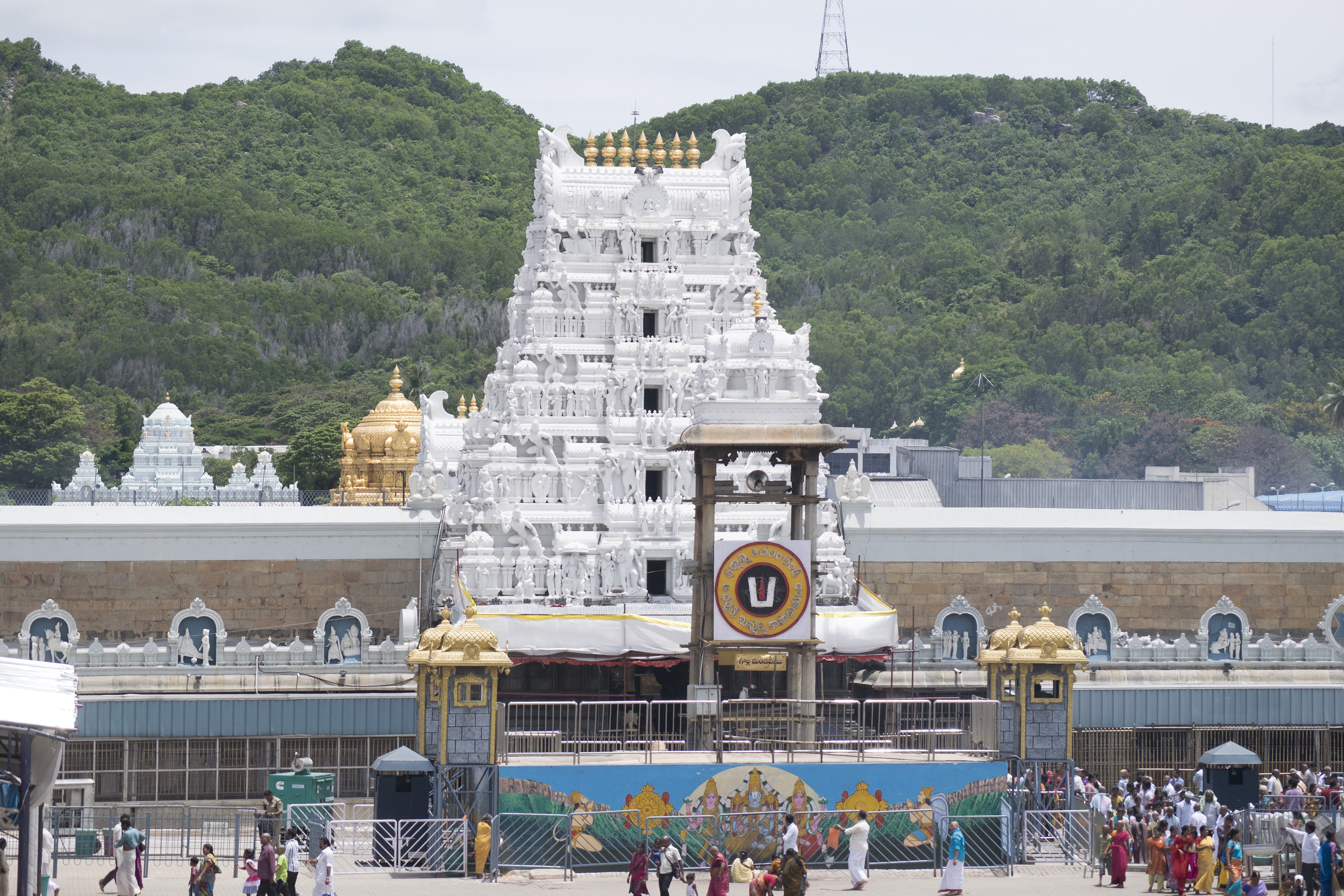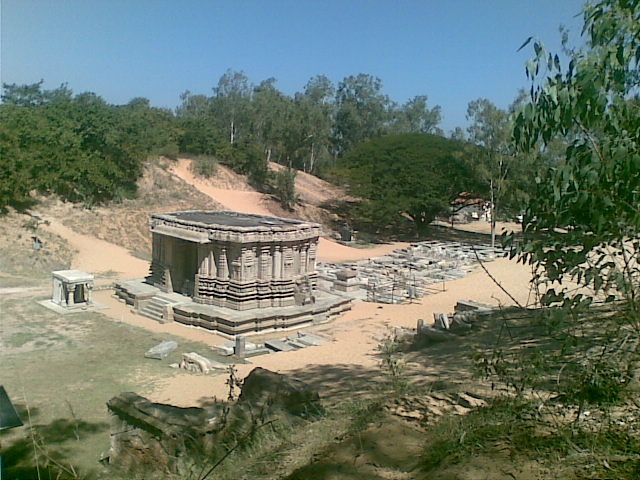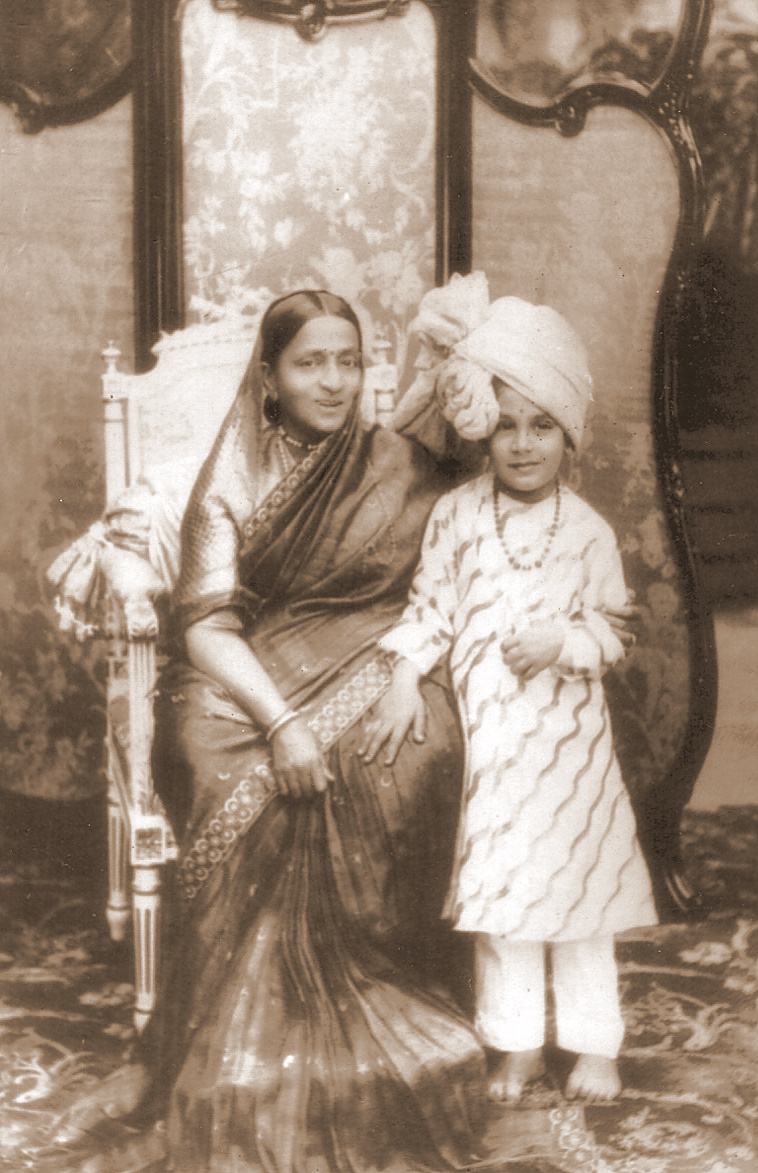|
Chamaraja Wodeyar III
Chamaraja Wodeyar III (29 September 1492 – 17 February 1553) was fifth raja of the Kingdom of Mysore and the last one to rule as feudal king under the Vijayanagara Empire. He reigned after his father's demise in 1513 until his death in 1553. Reign under Krishnadevaraya Chamaraja Wodeyar III ruled under four Vijayanagara emperors of the Tuluva dynasty. He began his kingship under Emperor Krishnadevaraya. Krishnadevaraya's ''rajaguru'' was Sri Vyasatirtha, a Mysore-born ''guru'' and philosopher. Further, the growing rebel against Vijayanagara was suspended by Chamaraja Wodeyar III's father, Chamaraja Wodeyar II in order to understand Krishnadevaraya first. Krishnadevaraya proved to be an extremely efficient ruler. He was inordinately knowledgeable. His reign focussed on all aspects of livelihood: arts and literature, culture, politics and business, and whatnot. Besides, his rule was justified by its benevolence, and hence none under him rose against him. He also defeated Yu ... [...More Info...] [...Related Items...] OR: [Wikipedia] [Google] [Baidu] |
Maharaja Of Mysore
The maharaja of Mysore was the king and principal ruler of the southern Indian Kingdom of Mysore and briefly of Mysore State in the Indian Dominion roughly between the mid- to late-1300s and 1950. In title, the role has been known by different names over time, from ''poleygar'' (Kannada, ''pāLegāra'', for 'chieftain') during the early days of the fiefdom to ''raja'' (Sanskrit and Kannada, king–of especially a small region) during its early days as a kingdom to ''maharaja'' (Sanskrit and Kannada, reatking–of a formidable kingdom) for the rest of its period. In terms of succession, the successor was either a hereditary inheritor or, in case of no issue, handpicked by the reigning monarch or his privy council. All rulers under the Sanskrit-Kannada titles of ''raja'' or ''maharaja'' were exclusively from the house of Wadiyar. As India gained Independence from British Crown in 1947, Crown allies, most of which were princely India, ceded into the Dominion of India by 1950. ... [...More Info...] [...Related Items...] OR: [Wikipedia] [Google] [Baidu] |
Vyasatirtha
Vyāsatīrtha (. 1460 – 1539), also called ''Vyasaraja'' or ''Chandrikacharya'', was a Hindu philosopher, scholar, polemicist, commentator and poet belonging to the Madhwacharya's Dvaita order of Vedanta. As the patron saint of the Vijayanagara Empire, Vyasatirtha was at the forefront of a golden age in Dvaita which saw new developments in dialectical thought, growth of the Haridasa literature under bards like Purandara Dasa and Kanaka Dasa and an amplified spread of Dvaita across the subcontinent. Three of his polemically themed doxographical works ''Nyayamruta'', ''Tatparya Chandrika'' and ''Tarka Tandava'' (collectively called ''Vyasa Traya'') documented and critiqued an encyclopaedic range of sub-philosophies in Advaita, Visistadvaita, Mahayana Buddhism, Mimamsa and Nyaya, revealing internal contradictions and fallacies. His ''Nyayamruta'' caused a significant stir in the Advaita community across the country requiring a rebuttal by Madhusudhana Saraswati through h ... [...More Info...] [...Related Items...] OR: [Wikipedia] [Google] [Baidu] |
1553 Deaths
Year 1553 ( MDLIII) was a common year starting on Sunday (link will display the full calendar) of the Julian calendar. Events January–June * May – The first Royal Charter is granted to St Albans, in England. * June – The first of the five Battles of Kawanakajima, the "Battle of the Fuse," commences in Japan between Takeda Shingen of Kai Province and Uesugi Kenshin of Echigo Province, part of a major series of conflicts during the Japanese Sengoku Period. * June 26 – Two new schools, Christ's Hospital and King Edward's School, Witley, are created by Royal Charter in accordance with the will of King Edward VI of England; St Thomas' Hospital, London, in existence since the 12th century, is named in the same charter. July–December * July 9 – Battle of Sievershausen: Prince-elector Maurice of Saxony defeats the Catholic forces of Margrave Albert of Brandenburg-Kulmbach. Maurice is mortally wounded. * July 10 – Four days after ... [...More Info...] [...Related Items...] OR: [Wikipedia] [Google] [Baidu] |
1492 Births
149 may refer to: *149 (number), a natural number *AD 149, a year in the 2nd century AD *149 BC, a year in the 2nd century BC *British Airways Flight 149 British Airways Flight 149 was a flight from London Heathrow Airport to Sultan Abdul Aziz Shah Airport, then the international airport for Kuala Lumpur, Malaysia, via Kuwait and Madras International Airports, operated by British Airways u ..., a flight from LHR to Kuwait City International Airport; the aircraft flying this flight was destroyed by Iraqi troops See also * List of highways numbered 149 * {{Number disambiguation ... [...More Info...] [...Related Items...] OR: [Wikipedia] [Google] [Baidu] |
Wodeyar Dynasty
The Wadiyar dynasty (formerly spelt Wodeyer or Odeyer, also referred to as the Wadiyars of Mysore), is a late-medieval/ early-modern South Indian Hindu royal family of former kings of Mysore from the Urs clan originally based in Mysore city. As Maharajas of Mysore, the Wadiyars ruled the Kingdom of Mysore from the late 1300s until 1950. Members of the Wadiyar dynasty and the Urs clan have also been royal advisers as Diwans to their reigning siblings, cousins, nephews, or distant relatives. Some members have also commanded army divisions as ''dalvoys'' (commander-in-chief) for their reigning monarch. During the late 14th century, the family was originally ''poleygars'' (Kannada for garrison) defending the regions in and around Mysore town for the Vijayanagara Empire, their feudal overlords. With the fall and decline of the empire in the 17th century, the Wadiyars declared independence when Raja Wadiyar seized the nearby town of Srirangapattana, the seat of Tirumala, Sriran ... [...More Info...] [...Related Items...] OR: [Wikipedia] [Google] [Baidu] |
Jayachamarajendra Wadiyar
Jayachamarajendra Wadiyar (18 July 1919 – 23 September 1974) was the 25th Maharaja of Mysore from 1940 to 1950, who later served as the governor of Mysore and Madras states. Early life Jayachamarajendra Wadiyar was born on 18 July 1919 at Mysore Palace as the only son and the last child of Yuvaraja Kanteerava Narasimharaja Wadiyar and Yuvarani Kempu Cheluvajamanni. He had three elder sisters, ''viz''., Rani Vijaya Devi, Sujayakantha Devi, and Jayachamundi Devi. Jayachamarajendra Wadiyar graduated from Maharaja's College, Mysore, in 1938, earning five awards and gold medals. He was married the same year, on 15 May 1938, to Maharani Satya Prema Kumari at Mysore Palace. He toured Europe during 1939, visiting many associations in London and became acquainted with many artists and scholars. He ascended the throne of the Kingdom of Mysore on 8 September 1940 after the demise of his uncle Maharaja Krishnaraja Wodeyar IV. He married Maharani Tripura Sundari Ammani on 6 May 1942. ... [...More Info...] [...Related Items...] OR: [Wikipedia] [Google] [Baidu] |
Mysore Palace
The Mysore Palace, also known as Amba Vilas Palace, is a historical palace and a royal residence (house). It is located in Mysore, Karnataka. It used to be the official residence of the Wadiyar dynasty and the seat of the Kingdom of Mysore. The palace is in the centre of Mysore, and faces the Chamundi Hills eastward. Mysore is commonly described as the 'City of Palaces', and there are seven palaces including this one. However, the Mysore Palace refers specifically to the one within the new fort. The land on which the palace now stands was originally known as ''mysuru'' (literally, "citadel"). Yaduraya built the first palace inside the Old Fort in the 14th century, which was set ablaze and reconstructed multiple times. The Old Fort was built of wood and thus easily caught fire, while the current fort was built of stone, bricks and wood. The current structure was constructed between 1897 and 1912, after the Old Palace burnt down, the current structure is also known as the New F ... [...More Info...] [...Related Items...] OR: [Wikipedia] [Google] [Baidu] |
Deccan Sultanates
The Deccan sultanates were five Islamic late-medieval Indian kingdoms—on the Deccan Plateau between the Krishna River and the Vindhya Range—that were ruled by Muslim dynasties: namely Ahmadnagar, Berar, Bidar, Bijapur, and Golconda. The sultanates had become independent during the break-up of the Bahmani Sultanate. In 1490, Ahmadnagar declared independence, followed by Bijapur and Berar in the same year. Golconda became independent in 1518, and Bidar in 1528. Although the five sultanates were all ruled by Muslims, their founders were of diverse, and often originally non-Muslim origins: the Ahmadnagar Sultanate was of Hindu-Brahmin origins; the Berar Sultanate by a Kannadiga Hindu convert; the Bidar Sultanate was founded by a Georgian slave; the Bijapur Sultanate was founded by a Georgian slave purchased by Mahmud Gawan; and the Golconda Sultanate was of Turkmen origin. Although generally rivals, the sultanates did ally with each other against the Vijayanagara ... [...More Info...] [...Related Items...] OR: [Wikipedia] [Google] [Baidu] |
Aliya Rama Raya
Rama Raya (died 23 January 1565 CE), known as "Aliya" (son-in-law in Kannada) was a statesman of the Vijayanagara Empire, the son-in-law of Emperor Krishna Deva Raya and the progenitor of the Aravidu dynasty of Vijayanagar Empire, the fourth and last dynasty of the empire. As regent, he was the de facto ruler of the empire from 1542 to 1565, although legally the emperor during this period was Sadasiva Raya, who was merely a puppet ruler. Rama Raya was killed at the Battle of Talikota, after which the Vijayanagara Empire got fragmented into several semi-independent principalities paying only nominal allegiance to the empire. Early life and career Rama Raya was born in a Telugu language, Telugu family. His mother was Abbaladevi, and she was the daughter of a chieftain in Nandyala. The Aravidu dynasty, Aravidu family of Rama Raya was native to South Andhra. "Aliya" Rama Raya and his younger brother Tirumala Deva Raya were sons-in-law of the great Vijayanagara Empire, Vijayanagara ... [...More Info...] [...Related Items...] OR: [Wikipedia] [Google] [Baidu] |
Krishnadevaraya
Krishnadevaraya (17 January 1471 – 17 October 1529) was an emperor of the Vijayanagara Empire, also known as the Karnata Empire, reigning from 1509 to 1529. He was the third monarch of the Tuluva dynasty, and is considered to be one of the greatest rulers in Indian history. He ruled the largest empire in India after the decline of the Delhi Sultanate.Keay, John, India: A History, New York: Harper Collins, 2000, p.302 Presiding over the empire at its zenith, he is regarded as an icon by many Indians. Krishnadevaraya earned the titles ''Karnatakaratna Simhasanadeeshwara'' (lit. "Lord of the Jewelled Throne of Karnataka"), ''Yavana Rajya Pratistapanacharya'' (lit. "Establishment of the King to Bahmani Throne"), ''Kannada Rajya Rama Ramana'' (lit. "Lord of the Kannada Empire), ''Andhra Bhoja'' (lit. "Scholar of Andhra"), ''Gaubrahmana Pratipalaka'' (lit. "Protector of Brahmins and Cows") and ''Mooru Rayara Ganda'' (lit. "Lord of Three Kings"). He became the dominant ruler of t ... [...More Info...] [...Related Items...] OR: [Wikipedia] [Google] [Baidu] |
Chamaraja Wodeyar II
Chamarajara Wodeyar II (Raja Hiriya Abiral Chamarajara Wodeyar II, 1463 – 1513) was fourth raja of the Kingdom of Mysore from 1478 until 1513. Multiple superiors Chamaraja Wodeyar II succeeded his father Timmaraja Wodeyar I after his death in 1478. He ruled for 35 years, and a long-reigning monarch was mandated for the kingdom's survival by looming peril of Mughal and European invasions. During his 35-year reign, Chamaraja Wodeyar II ruled as feudatory monarch under three families and eight emperors, surpassing all his forefathers in ruling under most emperors. Quick roll-overs and insubordination within Vijayanagara Soon after Virupaksha's death, Praudha Raya took over. Overpowered though he was, his subordinates exhibited insubordination. His own commander, his successor, and the founder of the Saluva dynasty, Saluva Narasimha Deva Raya, seized power from him and ascended the throne. Mysore had remained obedient to the Sangama family from the time Mysore government ... [...More Info...] [...Related Items...] OR: [Wikipedia] [Google] [Baidu] |
Tuluva Dynasty
Tuluva is the name of the third Dynasty of the Vijayanagara Empire. The dynasty traces its patrilineal ancestry to Tulu-speaking who are Bunt Nagavamshi Kshatriyas () Tuluva Narasa Nayaka, a powerful warlord from the westerly Tulu speaking region. His son Narasimha Nayaka arranged for the assassination of the weak Narasimha Raya II bringing an end to the rule of the Saluva dynasty. Narasimha Nayaka later assumed the Vijayangara throne as Viranarasimha Raya bringing the Tuluva dynasty to prominence. The dynasty was at its zenith during the rule of Krishnadevaraya, the second son of Tuluva Narasa Nayaka. History The original home of the kingdom was the westerly Tulu speaking region. A Sanskrit epigraph on the eastern wall of Tirumala temple describes the genealogy of Krishnadevaraya. The first ancestor of the Tuluva lineage to be mentioned is Timmabhupati and his wife Devaki. Timmabhupati is followed by his son Ishvara and consort Bukkamma and then a certain Narasa Bhupala who i ... [...More Info...] [...Related Items...] OR: [Wikipedia] [Google] [Baidu] |





